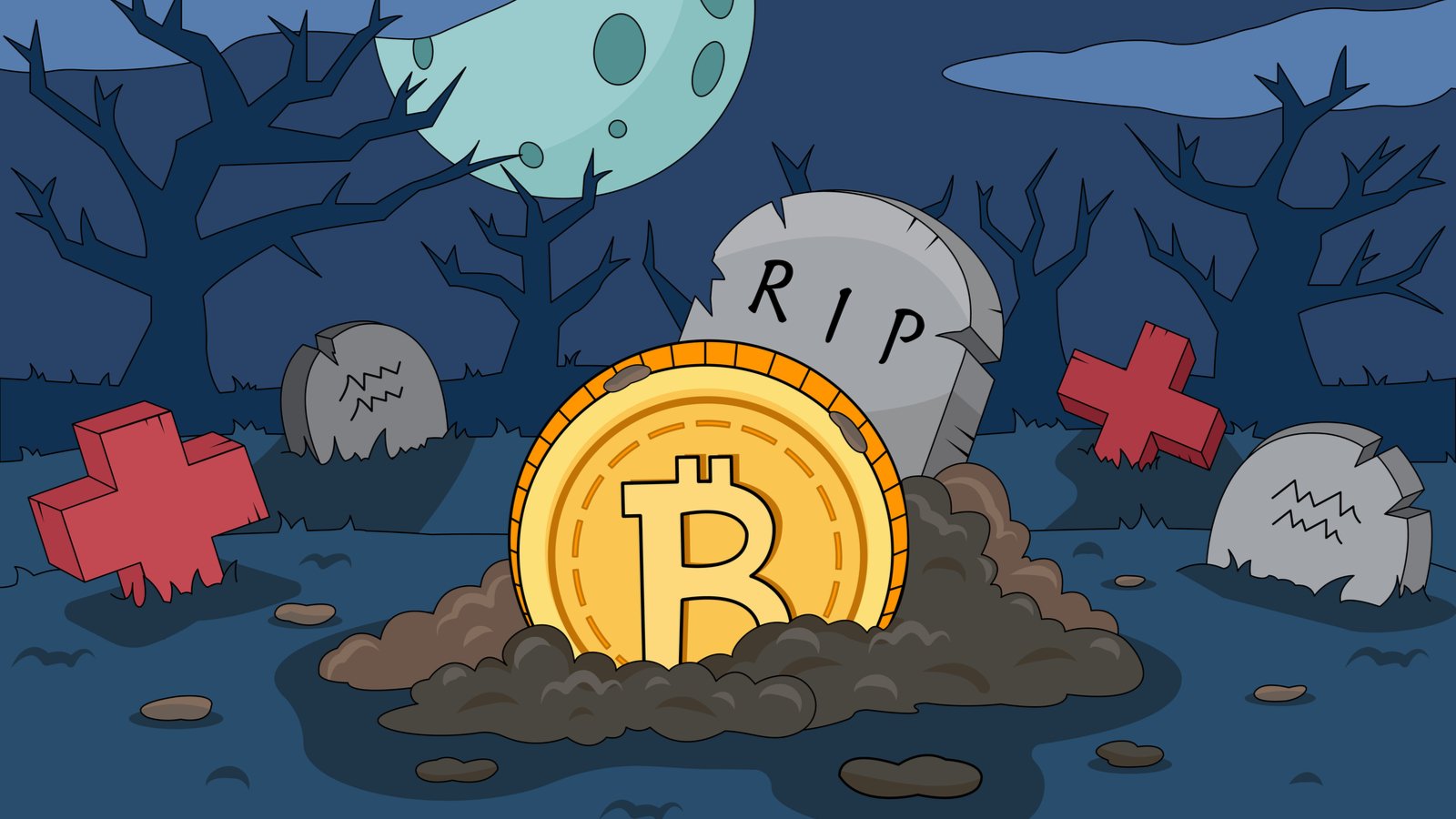On the release date, Brenden Rearick did not hold (either directly or indirectly) any positions in the securities mentioned in this article. The opinions expressed in this article are those of the author, subject to the InvestorPlace.com Publishing Guidelines.u.
Is Crypto Dead After 2022 Market Crash?


Source: Shutterstock
This year’s crypto market crash was the worst in the asset class’s short history. That much is true, simply given how many more people were affected in its aftermath as opposed to previous crypto crashes. But is crypto dead as a result? The answer is a bit loaded. What is certain, however, is that a fundamental change will occur in the crypto market in the coming years.
The past two years have been good for crypto’s exposure to the mainstream. At this point, at least everyone and their mother has heard of Bitcoin (BTC-USD). Last fall, countless guides appeared in response, telling people how to navigate crypto questions from family members during the holidays. Celebrities started flocking to non-fungible tokens (NFTs) through Bored Ape Yacht Club also.
Throughout 2021, the market cap of crypto ebbed and flowed. However, investors can see exactly the point when crypto hit the mainstream via Dogecoin‘s (DOGE USD) bull run early that year. At the time, the global market cap for crypto broke through $1 trillion. It then went on to climb north of $2 trillion by the end of 2021, helped by BTC’s $67,000 all-time high, the booming success of pay-to-earn blockchain games, NFT’s foray into mainstream art and the speculative wonders of pupcoins as Doge and Shiba Inu (SHIB-USD).
In fact, crypto seemed like an unstoppable force not too long ago. But there is a major fault line in the industry that was often overlooked as the asset class continued to make investors rich. Crypto was simply not made to exist as it did during the gravy train of 2021.
Crypto: Made for transactions, not gains
When Satoshi Nakamoto introduced Bitcoin to the world in 2008, the pseudonymous programmer probably didn’t envision anything like what we saw at the height of the crypto bull market. BTC priced in at well over $67,000 apiece and the “hodl” philosophy – buy the dip and never sell – took over. Now, Bitcoin whales collectively own nearly 46% of the coin’s total supply.
This is just not what Bitcoin was meant to be. Sure, the price of BTC was expected to go up somewhat, but that was originally only expected to be through the growth of its practical use cases. At its core, BTC was designed as a means of transaction for the unbanked. Bitcoin is an alternative to fiat, which allows users to operate outside of central bank control.
Of course, Bitcoin is not the only crypto like this. Although created as a joke, Dogecoin operates to exactly the same goal. Privacy coins like Monero (XMR-USD) and Zcash (ZEC-USD) does the same as well, with the added goal of making these transactions completely anonymous.
Ethereum (ETH-USD), the second largest currency that had its own price renaissance last year, operates on a different motive. However, ETH is not set on gains either. Vitalik Buterin and the seven other Ethereum founders launched the project with the intention of creating a blockchain with a built-in programming language. This created an ecosystem of decentralized apps (dapps) that can be immutable and deliver better results unlike the World Wide Web we know today.
Projects continue to innovate after market crashes
Continuing down the list of top cryptos, investors will notice that each project was built with a grand vision in mind – ones that never explicitly involve going up in price. Layer-1 projects like Cardano (ADA-USD), Solana (SOL USD) and Polka dot (DOT-USD) are competitors to Ethereum, and share the project’s dapp vision. Meanwhile, Tether (USDT-USD), Binance USD (BUSD-USD) and USD coin (USDC-USD) can not gain as stablecoins. The list goes on.
So, is crypto dead in the wake of this recent crash? No, not from an innovation perspective.
These projects are not phased by market volatility, because at the end of the day they focus on bigger visions. The trap that investors fall into when moving from stocks to crypto is to think that crypto developers care about coin prices in the same way that traditional companies care about shareholders and stock prices. This is not the case. In fact, it is quite common for projects to prohibit talking about price speculation on official channels.
Developers haven’t stopped innovating since the crypto crash. Investors are still seeing some massive rollouts and upgrades. Ethereum is on the verge of its biggest upgrade ever, and Cardano is soon to follow suit with its own hard fork. Ripple (XRP-USD) is also working closely with banks to implement a new worldwide banking communication standard.
Is crypto dead? To a certain demographic, yes.
The question “Is crypto dead?” comes down to simple framing. Are you an investor looking to tenfold your investment on a speculative token with no practical use cases? Do you buy an art NFT and bet on a celebrity to get their own from the same collection? If so, the answer is probably the “dead” question yes.
The market crash sends crypto into capitulation, and the chances of us seeing something like 2021 happen again are not very high. Simply put, the industry had caught lightning in a pot. Prices were already on the rise, more investors than ever participated in the market, the pandemic had created extremely favorable macroeconomic conditions and – most importantly – there were no regulations.
Almost all countries regulate crypto now, especially the US. The US Securities & Exchange Commission is cracking down massively on projects, especially in the wake of the crash. Going forward, investigations and legal challenges can hamper even the most innovative projects in the space. There is therefore not much room for the more speculative plays to emerge and immediately soar as before.
Crypto investing is not completely dead. But it is certainly much less favorable for those who are only interested in speculative investments and the potential for massive gains. The recent crash ended another speculative asset bubble; first there was the Dotcom bubble, then the housing bubble and now here we are. Obviously, online stocks didn’t disappear completely, nor did housing. But they haven’t looked like they did when they were at their peak. Neither will crypto.
























